At 04:40, I walked off to the toilet block, and on my return I set about inserting a fender between the bow and pier. They were difficult shapes to insert a fender between, but I somehow managed it. Ah, sleep at last.
I arose at 9am to find Rex wrapped up in almost winter gear. A cold breeze blew outside, and hints of rain we hitting the decks.
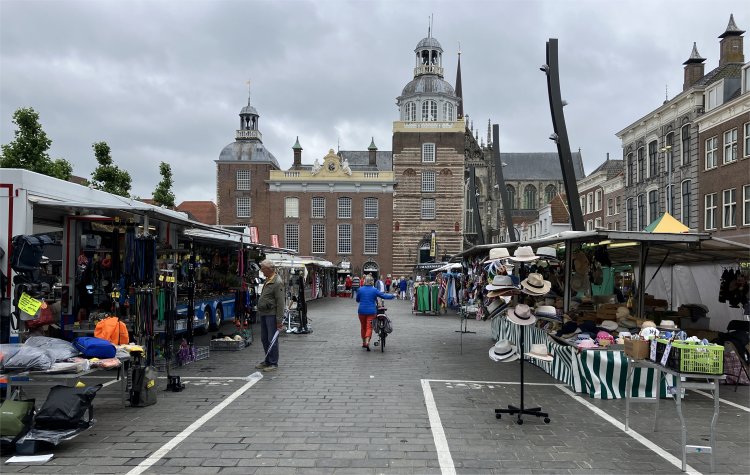 Market Day |
The first half of the day was written off by strong cold winds and occasional rain. We stayed put for a while with the expectation that it would clear up later.
When that point in time arrived, Rex fell into conversation with the skipper of another British boat in the marina, a chap of 78 years of age, with a shock of white hair and a ready smile. He appeared to have sailed extensively, knew Friesland and its environs well, yet Rex managed to keep the side up by casually slipping into the conversation the fact that we had sailed to St. Petersburg, which halted the man in his stride somewhat. He was based for some of his time in Fowey, but had taken a shine to Woodbridge and now owned a flat there too. Rex and he traded punches on vessels they had owned over the years - always the same with boat owners.
We prised ourselves away and strolled into town. The market was on today, worthy of an explore, but nothing to write home about. We continued down Singelstraat to a pedestrianised area between the churches Grote Kerk of Maria Magdelenakerk and Saint Maria Magdalena.
 Grote Kerk of Maria Magdelenakerk |
The Great Church is dedicated to St. Mary Magdalene. However, it isn't exactly known when this happened. Mary Magdalene is the patron saint of the city of Goes. According to the Gospel of Luke, she came from Magdala, a fishing village on the western shore of Sea of Galilee. Many stories are told about her. For example, she is said to have been a prostitute who married Jesus. It is also believed that she was the first woman to visit Jesus' tomb on Easter morning. It is remarkable that her name is linked to the church of Goes. Almost all medieval churches in Zuid-Beveland have a male saint as their patron saint, often St. Nicholas.
We stepped inside through two large oak doors to find a sea of space opening up, beautifully lit by the sun shining through stained glass windows. The left and right apses contained stained-glass windows, created in 1930 by Arnhem artist Schilling. At one end towered a large organ, an instrument ranked among the top ten in the Netherlands. In the early twentieth century, a pneumatic organ was built, which was worn out by the 1960s. The Danish organ builder, Marcussen, was commissioned to build a new one, partly funded by the municipality of Goes. It was inaugurated in 1970.
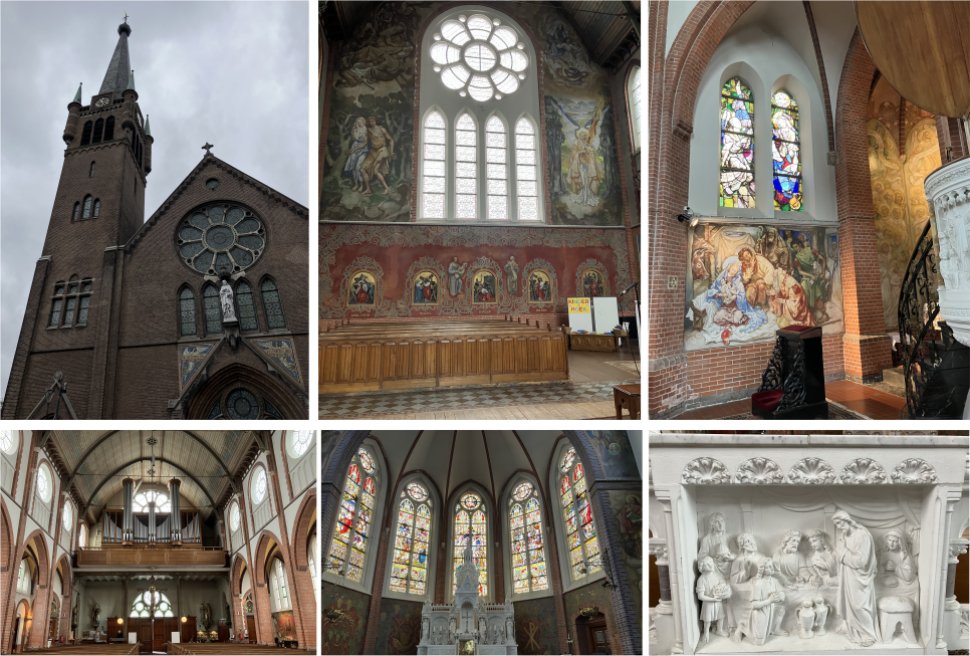 St. Maria Magdalena |
This church, St. Maria Magdalena, is a cruciform basilica in neo-Gothic style, with an octagonal crossing crowned by a lantern. This appears to be an early attempt at centralizing, as it gives those seated in the transept-arms a good view at the choir. Also, while the narrow side-aisles have narrow pointed windows, it's the clerestory with its large circular windows that provide light to the nave, together with the rose-windows of the transept and the front. Next to the facade, at the front stands a tower, on the top of which are turrets at its corners.
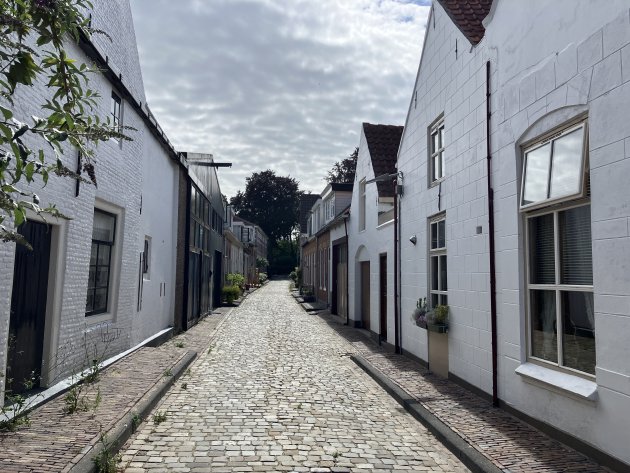 Typical Side Street |
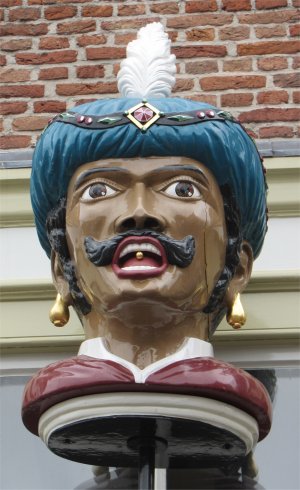 Traditionl Gaper (Yawner) Above the Chemist's |
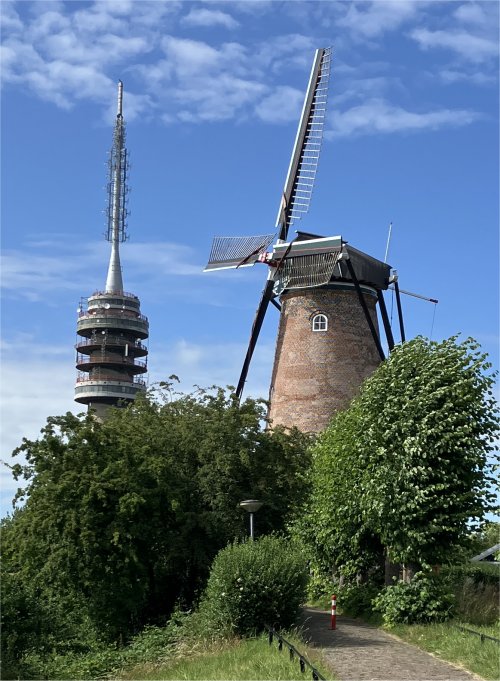 Koornbloem Mill and TV Mast Reaching for the Sky |
Evening was spent back on the Grote Markt where I enjoyed a meal of baked cod with the ubiquitous fries with mayonnaise.
We took a circuitous trek back to the boat, visiting the Koornbloem (corn flower) mill, built in 1801 on a northern rampart of the town. This is the only remaining mill of the eleven mills that once spun in Goes. Its predecessor burned down in 1771. The mill has undergone several restorations since 1970. Sadly, it was too late to look around the mill.
Nearby, a TV mast constructed in 1955, reached for the sky. It was unopen to the public.
